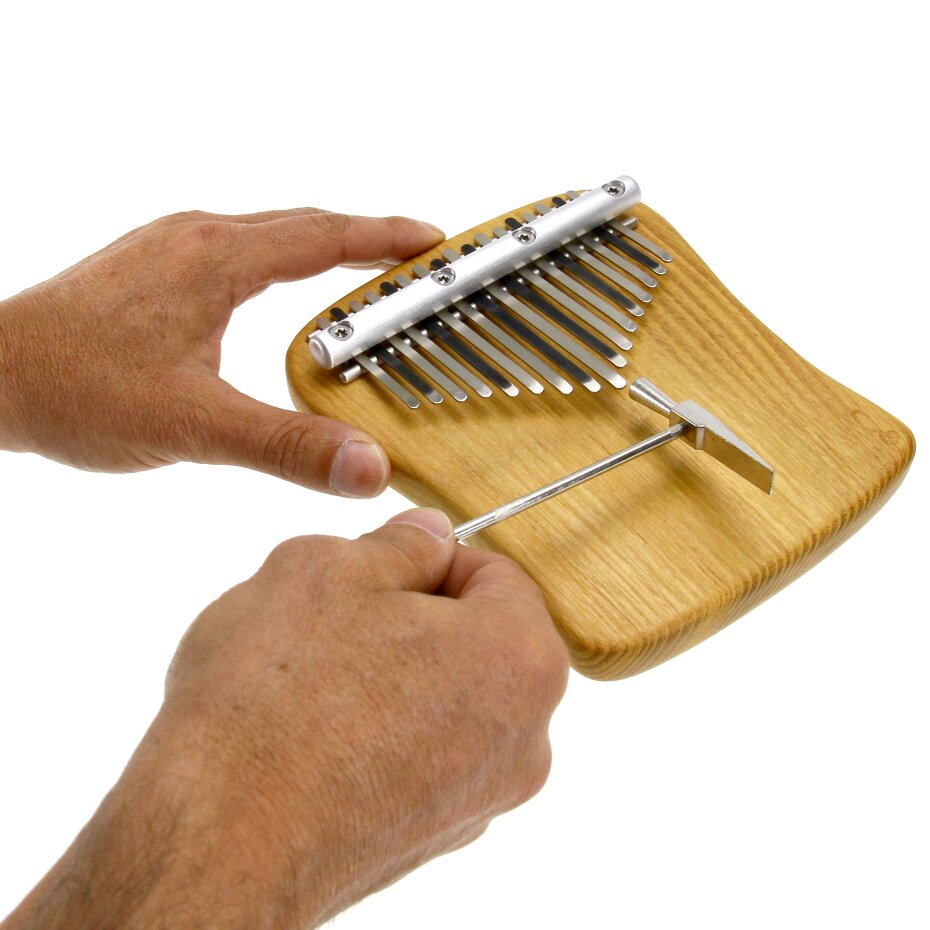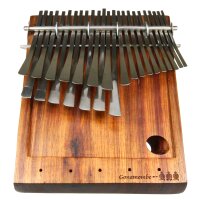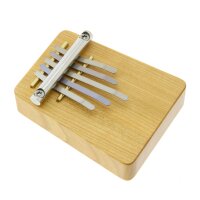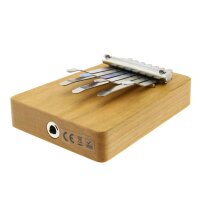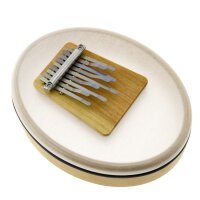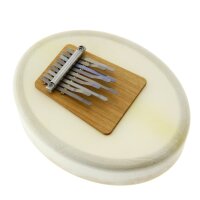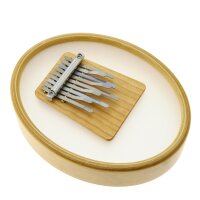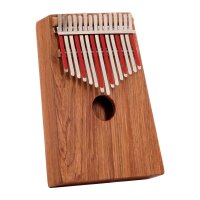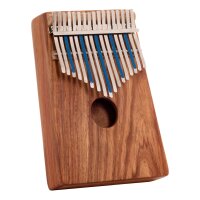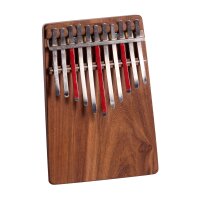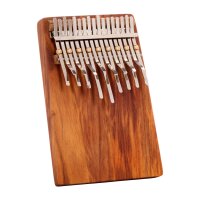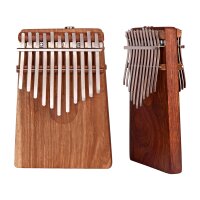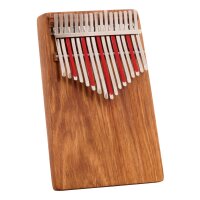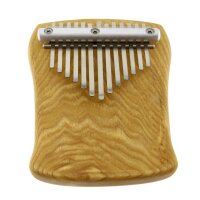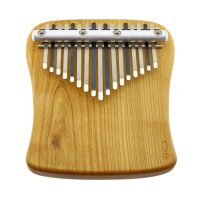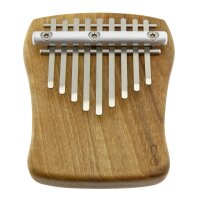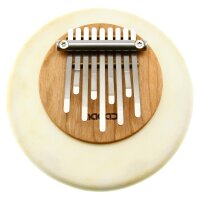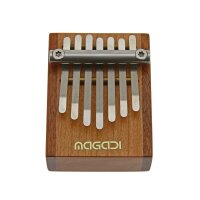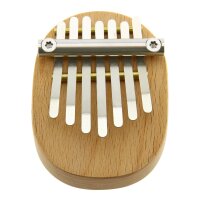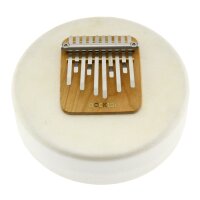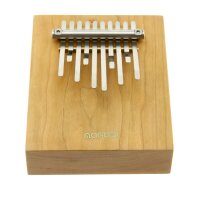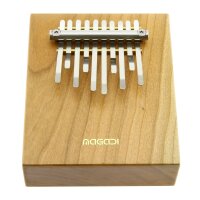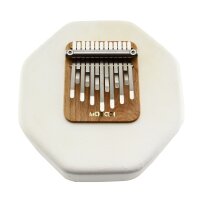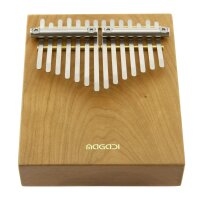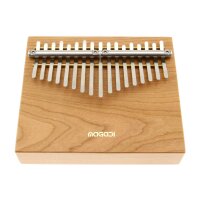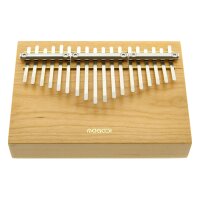Anyone who plays a Kalimba regularly will certainly have noticed that the instrument begins to sound "inharmonic" or "weird" over time. Then the moment has come you ask yourself, "What's going on here and how can I bring it back to its original condition?"
After reading this blog post, you'll have the know-how you need to make your Kalimba sound clean again.
Why should I regularly check my Kalimba for tuning and retune it if necessary?
Tuning is the process of adjusting the musical instrument so that the desired notes are reproduced cleanly when played. Instruments are usually sold in tune, but over time various influences change the tuning to a greater or lesser degree. For example, fluctuations in temperature and humidity can change the nature of the individual components and their interaction. Mechanical influences such as intensive playing, frequent packing and unpacking from a case/bag, or a fall can cause the tines to become "out of tune".
Alternative Kalimba tunings or reference frequency 432 Hz
Another reason to look into tuning a Kalimba could be the desire to increase the melodic range of the instrument and to tune it to a new, alternative tuning or to tune it to a reference frequency of 432 Hz instead of 440 Hz. It is therefore essential for a clean and harmonious sound to regularly check the instrument's tuning and retune it if necessary.

Kalimba tuning is incredibly simple
1. What do you need?
All you need is:
- a tuner or tuning app
- a tuning hammer or a any small hammer
- time and patience
- optionally a tuning iron or a bit holder (see video below)
Meanwhile, a variety of free and paid tuner apps for smart phones are available in the app stores. Most of them are well suited for this task.
Android: Tuner Apps in the Google Play Store | Tuner Apps at F-Droid
iOS: Tuner Apps in the Apple App Store
Tuning hammers and irons are sometimes included with the Kalimba or available as accessories. The alternatives, a small hammer and a bit holder, may already be in your toolbox!
2. How to actually tune the Kalimba?
Familiarize yourself with the tuner and get an overview of the current tuning of the instrument. You may have access to information material from the manufacturer. On some instruments, the tunings are noted on the reeds. If the instrument needs a completely new tuning, you will need a suitable scheme for the Kalimba.
The actual process of tuning consists of checking the existing tuning and making any necessary adjustments. You change the tuning of the metal reeds by using the tuning hammer to shorten or lengthen the tines, or the vibrating part of them, by carefully tapping on the end faces. A tuning iron could be used to apply the careful blows more precisely to the tines' ends.

Specifically: You play a note on the kalimba and check it on the tuner. If the note is too high, you have to lengthen the vibrating part of the tine with the help of the (tuning iron and) hammer. If the tested tone is too low, shorten the tine.
Slowly and carefully, with the lightest of strokes, approach the desired note. After each stroke, the tuning should be checked again. Repeat the process until all tines have reached exactly the desired notes.
Which tine you start the tuning process with is up to you. You can start tuning at the first reed or at the lowest note, which is the longest reed.
What should you keep in mind when tuning your Kalimba?
If tuning is done without a tuning iron, you should take care not to damage the surface of the sound box or body of the Kalimba with the hammer, especially in the case of Kalimbas covered with skin or membrane. In this case, it is advisable to cover them with a soft cloth before starting.
Loosening the screws that fix the bridge and the metal tines is usually not necessary. If you have the impression that the tines move too easily, you should tighten the screws carefully.
By the way, if you don't have a Kalimba yet, you can find a large selection of Kalimbas to tune in our store :-)
